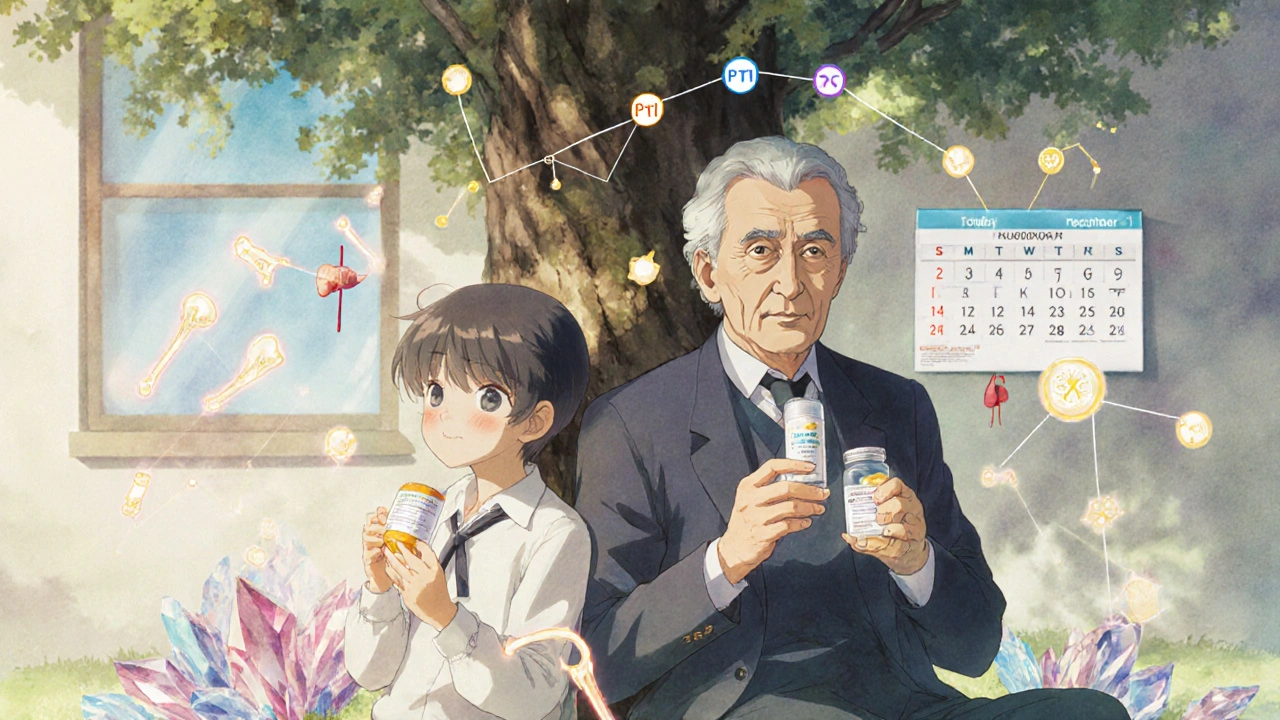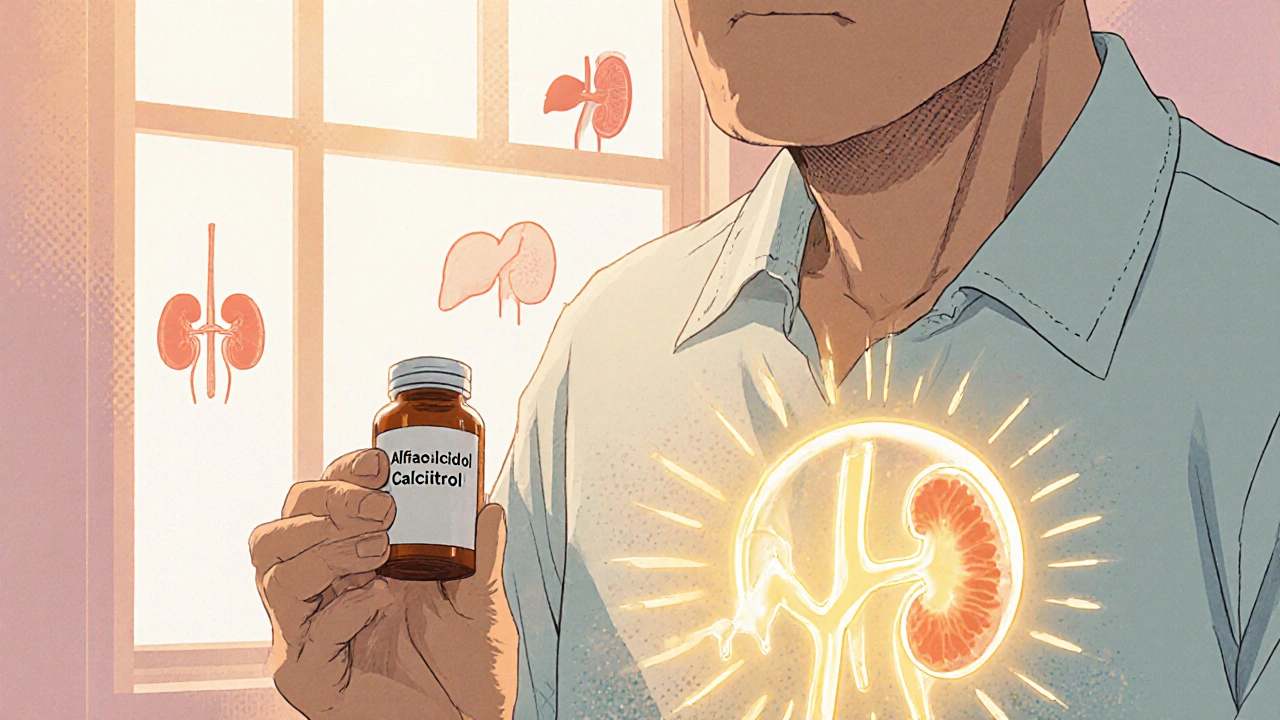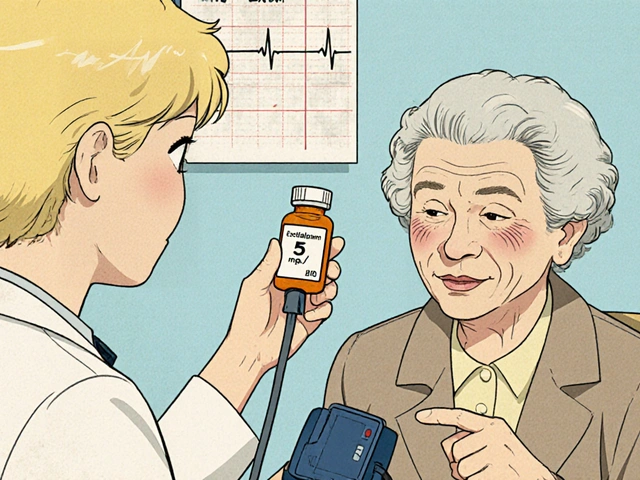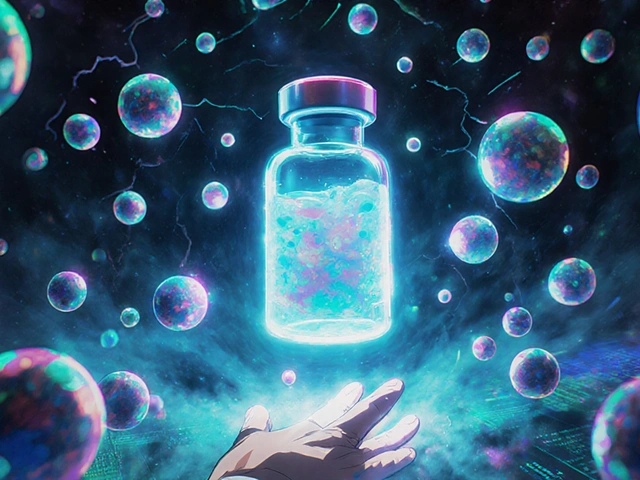Alfacalcidol is not your everyday vitamin D supplement. It’s a synthetic form of vitamin D that your body converts into its active version-calcitriol-to help manage calcium and phosphate levels. Unlike regular vitamin D, which needs two steps of activation in the liver and kidneys, alfacalcidol only needs one: conversion in the liver. That makes it especially useful for people whose kidneys can’t do their job properly. If you’ve been prescribed alfacalcidol, you’re likely dealing with kidney disease, osteoporosis, hypoparathyroidism, or rickets. Getting the dose wrong can lead to serious problems-too little and your bones weaken; too much and you risk calcium buildup in your blood vessels or kidneys.
How Alfacalcidol Works in the Body
Alfacalcidol is a prodrug. That means it’s inactive until your body turns it into calcitriol, the hormone form of vitamin D. Once converted, calcitriol binds to receptors in your intestines, bones, and kidneys to control how much calcium and phosphate you absorb, release, or hold onto. In healthy people, the kidneys make calcitriol naturally. But if your kidneys are damaged-like in chronic kidney disease (CKD)-they can’t keep up. That’s where alfacalcidol steps in. It bypasses the kidney’s job and lets your liver do the first activation step.
People with hypoparathyroidism also benefit. Their parathyroid glands don’t produce enough parathyroid hormone (PTH), which normally tells the kidneys to make calcitriol. Without PTH, calcium drops and phosphate rises. Alfacalcidol restores balance without needing PTH to trigger it.
Typical Dosage Ranges by Condition
Dosage isn’t one-size-fits-all. It depends on your condition, age, kidney function, and current calcium levels. Here’s what’s commonly used:
- Chronic kidney disease (CKD) on dialysis: Starting dose is usually 0.25 to 0.5 micrograms per day. Doctors often adjust this every 2-4 weeks based on blood calcium and phosphate levels.
- Hypoparathyroidism: Most adults start at 0.25 mcg daily, sometimes increasing to 1 mcg daily if needed. Children may need lower doses based on weight.
- Renal osteodystrophy: Similar to CKD dosing-0.25-1 mcg daily. Monitoring serum calcium is critical to avoid hypercalcemia.
- Postmenopausal osteoporosis: Often 0.5 mcg daily, sometimes combined with calcium supplements to improve bone density.
- Rickets or osteomalacia: Starting at 0.25-0.5 mcg daily, with gradual increases under medical supervision.
Some patients, especially those with severe kidney failure, may take it every other day instead of daily. Others might get it as a weekly injection if swallowing pills is difficult. Always follow your doctor’s exact instructions-never guess.
How to Take Alfacalcidol Correctly
Alfacalcidol comes as capsules, oral drops, or injections. Most people take it by mouth. Here’s how to get it right:
- Take it at the same time every day. Consistency helps keep your calcium levels stable. Morning is often recommended to align with natural vitamin D rhythms.
- Swallow capsules whole. Don’t crush or open them unless your doctor says so. Some formulations are designed for slow release.
- Use the dropper correctly if using liquid. Measure doses with the provided syringe or dropper-not a kitchen spoon. One drop can equal 0.25 mcg. A mistake here can lead to overdose.
- Take with or without food? Alfacalcidol is absorbed well either way. But if it upsets your stomach, take it with a light meal.
- Don’t skip doses. Missing a dose can cause calcium levels to drop, making bone pain or muscle cramps worse. If you forget, take it as soon as you remember-unless it’s almost time for the next dose. Never double up.
Some patients are taught to self-administer injections at home. If that’s you, your nurse will show you how to store the vials, clean the injection site, and dispose of needles safely. Never reuse needles.

What Happens If You Take Too Much?
Alfacalcidol overdose isn’t common, but it’s dangerous. Too much raises blood calcium (hypercalcemia), which can cause:
- Nausea, vomiting, loss of appetite
- Excessive thirst and frequent urination
- Confusion, fatigue, or muscle weakness
- Heart rhythm problems
- Calcium deposits in kidneys, lungs, or blood vessels
These symptoms don’t always show up right away. Some people feel fine for weeks until a routine blood test reveals high calcium. That’s why regular blood tests are non-negotiable. Most doctors check calcium, phosphate, and parathyroid hormone levels every 2-4 weeks when starting treatment, then every 3 months once stable.
If you suspect an overdose, stop taking alfacalcidol immediately and contact your doctor. Treatment may include stopping the drug, IV fluids, and medications like bisphosphonates to lower calcium levels.
Drug Interactions to Watch For
Alfacalcidol doesn’t play well with everything. Here are key interactions:
- Thiazide diuretics (like hydrochlorothiazide): These reduce calcium loss in urine, which can push calcium levels too high when combined with alfacalcidol.
- Barbiturates and anticonvulsants (phenytoin, carbamazepine): These speed up how fast your body breaks down alfacalcidol, making it less effective. Your dose may need to increase.
- Cholestyramine and colestipol: These cholesterol-lowering resins can block alfacalcidol absorption if taken at the same time. Take them at least 4-6 hours apart.
- Other vitamin D products: Never take alfacalcidol with calcitriol or high-dose vitamin D supplements. You risk doubling up and overdosing.
- Cardiac glycosides (digoxin): High calcium can make digoxin more toxic. If you’re on digoxin, your doctor will monitor you closely.
Always tell your doctor about every medication, supplement, or herbal product you’re using-even over-the-counter ones.
Special Considerations: Pregnancy, Kids, and Elderly
Alfacalcidol is used in children with rickets and in elderly patients with osteoporosis, but caution applies.
Children: Dosing is weight-based. For infants, it’s often 0.01-0.02 mcg/kg/day. Growth and development must be tracked closely. Too much can harden growth plates and stunt height.
Elderly: Older adults are more sensitive to calcium changes. They may need lower starting doses and slower increases. Kidney function declines with age, so creatinine and eGFR tests are essential before and during treatment.
Pregnancy: Alfacalcidol crosses the placenta. It’s used in rare cases of maternal hypoparathyroidism or severe rickets, but only under strict supervision. High doses can affect fetal bone development. Breastfeeding is generally safe at standard doses, but monitor the infant for signs of hypercalcemia.

Monitoring and Long-Term Management
Alfacalcidol isn’t a set-it-and-forget-it drug. You need ongoing checks:
- Blood calcium: Target range is 8.5-10.2 mg/dL. Levels above 10.5 mg/dL are a red flag.
- Phosphate: Should stay between 2.5-4.5 mg/dL. Too high can trigger soft tissue calcification.
- Parathyroid hormone (PTH): Helps assess if your body is responding properly. In CKD, PTH is often kept in a specific target range (e.g., 2-9 times the upper limit of normal).
- Urine calcium: Sometimes tested to see if you’re excreting too much calcium, which raises kidney stone risk.
- Renal function: Creatinine and eGFR every 3-6 months.
If your calcium stays high despite lowering the dose, your doctor might add phosphate binders or switch to another treatment like paricalcitol. Some patients eventually need a calcimimetic drug to suppress PTH.
When to Call Your Doctor
Don’t wait for your next appointment if you notice:
- Extreme thirst or urinating more than usual
- Unexplained nausea, vomiting, or stomach pain
- Muscle cramps or weakness that won’t go away
- Confusion, dizziness, or irregular heartbeat
- Swelling in your hands, feet, or face
These could be early signs of high calcium. Early action prevents lasting damage.
Can I take alfacalcidol with calcium supplements?
Yes, but only if your doctor recommends it. Many people on alfacalcidol also need calcium supplements to support bone health, especially if they have kidney disease or osteoporosis. However, taking too much calcium alongside alfacalcidol raises the risk of hypercalcemia. Your doctor will check your blood calcium levels and adjust both the alfacalcidol and calcium doses together. Never start or stop calcium supplements on your own.
How long does it take for alfacalcidol to work?
You won’t feel immediate changes. Blood calcium levels usually start rising within 3-7 days. Bone-related symptoms like pain or weakness may take weeks to improve. In children with rickets, visible bone healing can take 2-3 months. The goal isn’t quick relief-it’s long-term balance. Patience and consistent dosing matter more than speed.
Is alfacalcidol the same as vitamin D3?
No. Vitamin D3 (cholecalciferol) is the natural form your skin makes from sunlight. Your body must convert it twice-first in the liver, then in the kidneys-to become active. Alfacalcidol is already partially activated, so it only needs one step (in the liver). This makes it faster and more reliable for people with kidney problems. If you have healthy kidneys, vitamin D3 is usually preferred. Alfacalcidol is reserved for when your body can’t activate vitamin D on its own.
Can I drink alcohol while taking alfacalcidol?
Moderate alcohol is usually fine, but heavy drinking can interfere with calcium metabolism and worsen bone loss. Alcohol also stresses the liver, which is where alfacalcidol gets converted. If you drink regularly, tell your doctor. They may need to monitor your liver enzymes or adjust your dose. Avoid binge drinking-it raises your risk of hypercalcemia and liver damage.
What happens if I stop taking alfacalcidol suddenly?
Stopping abruptly can cause your calcium levels to drop quickly, especially if you have kidney disease or hypoparathyroidism. This may trigger muscle spasms, tingling in your fingers or lips, seizures, or heart rhythm issues. Never stop without talking to your doctor. If you need to stop, they’ll likely taper the dose slowly and monitor your levels closely during the process.
Next Steps: What to Do After Starting Alfacalcidol
Once you’re on alfacalcidol, your job isn’t done. Stay engaged:
- Keep all blood test appointments-even if you feel fine.
- Write down any new symptoms and bring them to your next visit.
- Use a pill organizer if you take multiple medications.
- Ask for a printed dosing schedule from your pharmacist.
- Learn the signs of high calcium so you can act fast.
- Keep your medication in a cool, dry place away from children.
If you’re managing this long-term, consider joining a support group for people with kidney disease or parathyroid disorders. Sharing experiences helps you stay on track. You’re not alone-and with the right care, alfacalcidol can help you live well for years.







Beth Banham
8 November, 2025 13:46 PMBeen on this for 3 years now for CKD. Honestly, the biggest game-changer was just setting a daily phone reminder. I take it with my morning coffee and never miss. Blood work’s been stable since I started tracking my calcium intake too. No drama, just consistency.
Brierly Davis
10 November, 2025 02:25 AMYo this is legit helpful 😊 I just started this last month and was totally lost. The part about not crushing capsules? Huge. My grandma tried to open hers ‘cause she said they were too big-bad idea. Now I use the dropper and it’s way easier. Thanks for laying it out so simple!
Amber O'Sullivan
11 November, 2025 04:38 AMWhy do people even ask if they can take calcium with this like its a new idea. Of course you need it. If your doctor didn’t tell you that they’re not doing their job. Stop guessing and get your numbers checked. I’ve seen too many people wing it and end up in the ER. Simple math: low calcium = bone pain. High calcium = kidney damage. Pick one.
Jim Oliver
13 November, 2025 00:10 AMWow. Just... wow. Someone actually wrote a coherent, medically accurate post about alfacalcidol? Did we time-travel to 2012? Also, you mentioned thiazides-did you forget to warn about the 47% of patients who develop hypercalcemia within 6 weeks? No? Then this is still dangerously incomplete. And why no reference to the 2023 KDIGO guidelines? Amateur hour.
William Priest
13 November, 2025 06:44 AMbro alfacalcidol is just fancy d3 but the kidneys are broke so they give you the pre-activated version. its like giving someone a ready-to-eat burrito instead of raw beans and rice. also dont mix it with other d stuff unless u wanna turn into a human calcium statue. also alcohol bad. duh.
Ryan Masuga
14 November, 2025 11:16 AMReally appreciate this breakdown. I’ve been helping my dad manage his hypoparathyroidism and this cleared up so much confusion. We were worried about the dosing because he’s 78 and his creatinine’s been creeping up. We’re going to ask his nephrologist about switching to every-other-day dosing-didn’t even know that was an option. Also, the part about not skipping doses? That’s us. We’ve got a little pill box now. Thanks for the real talk.
Jennifer Bedrosian
16 November, 2025 02:02 AMOMG I JUST FOUND OUT MY MOM WAS TAKING VITAMIN D3 WITH THIS AND DIDNT TELL HER DOCTOR AND NOW SHE HAS THAT WEIRD TINGLING IN HER FINGERS AND I THINK SHE’S HAVING A SEIZURE BUT SHE SAYS SHE’S FINE BUT SHE ALWAYS SAYS THAT AND I’M PANICKING RIGHT NOW WHAT DO I DO
Lashonda Rene
16 November, 2025 08:37 AMso i just wanted to say thank you for writing this because i was so confused about why my doctor switched me from regular vitamin d to this thing called alfacalcidol and now i get it like its not that i dont need vitamin d its that my kidneys arent doing their part and this helps them out by skipping the step they cant do anymore and i think its so cool how the body works like its like a little factory and if one machine breaks you gotta find another way to make the product and i never knew that taking it in the morning was better and i always took it at night and now im gonna change it and also i think its so important to write down your symptoms because sometimes you forget what happened a week ago and your doctor needs to know and i love that you said to join a support group because i feel so alone in this and i think other people get it and i just wanted to say thank you for making this so easy to understand even though i dont know all the big words